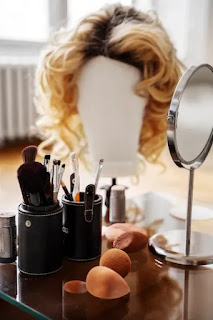Your Guide to Hair Care During Chemotherapy
Introduction
If you're one of the millions of people going through chemotherapy, you know how much your hair can change. It's important to be prepared for this and make sure that you take care of your hair during chemotherapy!
Hair loss will likely be your first side effect to be aware of.
You will likely experience hair loss during chemotherapy. The first signs of this are often thinning and dryness of the scalp, which may be accompanied by dandruff or itching. While it's completely normal for some people to lose 50 percent of their hair within three months, it's also possible for your body to retain much more than that in an attempt to protect itself from the chemotherapy drugs. If you have been on one round of treatment and have lost a significant amount of hair, don't worry—your body will begin replacing your lost follicles once the treatment ends!
Your hair may thin or fall out soon after your first treatment.
Hair loss is a common side effect of chemotherapy, and it can begin soon after your first treatment. Hair loss can be expected to start during the first month of treatment, but it may be complete by the second or third month. The hair should grow back within 10-12 months after chemotherapy has ended. However, it’s important to know that not all patients experience hair loss as a side effect of chemotherapy; if you are worried about losing your hair during chemo, talk with your doctor about whether other medications can help reduce this side effect.
There are two main types of chemotherapy drugs: alkylating agents and antimetabolites (also called antimitotics). Alkylating agents work by breaking down cells' DNA so they cannot divide properly – this kills cancerous cells while leaving healthy ones intact. Antimetabolites target specific enzymes involved in cell growth; these drugs stop regular cells from growing and dividing rapidly enough for tumors to form.
Hair loss usually is complete by the second or third month.
Hair loss is a common side effect of chemotherapy and can begin after the first treatment. The amount of hair lost varies from person to person. Hair usually begins to fall out in small amounts at first, then more rapidly as time goes on. When your hair loss reaches its peak, you may notice that your scalp appears pink or red because of irritation where the hair has fallen out.
You will probably find new hairs growing back in before long; however, it's not unusual for some baldness to persist for up to six months after treatment ends. Some women experience permanent thinning or complete loss (alopecia). It's difficult to predict how much hair loss you'll experience during treatment or whether any changes will be permanent; talk with your healthcare provider about what he or she expects for your particular situation and when you can expect any new hair growth or regrowth after treatment ends."
If you want your hair back, you should wait to cut it until a month after your final treatment.
If you’re going through chemotherapy, you may be wondering whether it’s safe to cut your hair. It is! But some people prefer to wait until their hair has grown back before getting a trim. This isn’t a hard-and-fast rule, but it can be helpful if you want to keep your options open.
If the idea of new hairstyles keeps your spirits up during chemo treatments and helps keep your mind off of worrying about losing all of your hair, then by all means go do what makes you happy! But if you don't like the way things look now (or even if they look great), don't rush into styling them while they're still in their nappy stage. Once they've been washed and dried once or twice (so they're no longer sticking out in every direction), then take an objective look at how different styles might suit them better than others would have done before making any drastic changes from there on out."
You can protect your scalp from sun damage by using sunscreen and wearing a hat.
Sunscreen is an important part of your hair care routine. Sun damage can lead to hair loss, and you don’t want that! You can protect your scalp from sun damage by using sunscreen and wearing a hat.
Some chemo patients are given hats as part of their treatment. If you were given a hat, wear it—it will keep the sun off of your head, protecting it from further damage. If not, look for one with a wide brim (at least 2 inches) or purchase one yourself at any pharmacy. This type of hat will provide maximum protection against damaging UV rays, which could cause or worsen hair loss if left unprotected for long periods in the summer months in particular when sunlight is strongest due to lower levels of ozone layer protection compared with winter months when it's stronger due to more ozone layer coverage which reduces harmful ultraviolet radiation levels reaching earth surface areas
Wigs for cancer patients often are covered by health insurance or charitable programs but double-check with yours.
Wigs for cancer patients often are covered by health insurance or charitable programs but double-check with yours.
If you're a wig wearer and find one that works for you, be sure to hang on to it until your hair regrows. You will save money by not needing to buy another wig while waiting for your hair to grow back.
If you've lost your hair to chemotherapy, a wig or other prosthesis may be covered by health insurance. You should be able to find out more about the specifics of your policy by calling the number on your ID card or contacting an insurance company representative directly.
You may also be eligible for financial assistance through the American Cancer Society or other charitable organizations. If you’ve lost your hair due to alopecia, a wig or other prosthesis can be purchased at a low cost from certain organizations, including Wigs for Kids and The Pantene Beautiful Lengths Program.
Many wigs for cancer patients look just like real hair.
Wigs for cancer patients are made from real human hair. Many wigs for cancer patients look just like real hair, and some even have a part that can be styled with a comb or hand-combed. The wig in the photo above is made from 100% human hair, but some wigs use synthetic materials, which are less expensive than natural fibers.
Wig manufacturers make different kinds of wigs, including those designed specifically to cover the entire head (full cap) and those that cover only part of it (partial). If you're going through chemotherapy or another treatment that will leave you bald on top of your head, consider getting a full cap wig—it'll give you more coverage around your face so people can't tell by looking at you whether or not your hair has fallen out yet!
In addition to style selection options like length and cut type options such as long bob vs short pixie cut - users can also choose how much styling they want to be done before shipping their new purchase home via UPS Ground Shipping Method! This means no more waiting weeks before getting access again after purchasing something on Amazon Prime Day because no one responded within 24 hours after inquiring about having someone come over!"
Some wigs for cancer patients are washable and many others can be washed at a salon.
If you have a washable wig, you can take care of it at home. If your wig is not washable, you can usually find a salon in your area that will do it for you. Wigs for cancer patients often last six months to one year and cost anywhere from $1,000-$2,000 depending on the type of wig and where you shop!
If you are looking for a wig, it’s best to shop around. Make sure the wig is made from real human hair and not synthetic fibers. This will help it look more natural and last longer. You should also make sure that your wig has adjustable straps on it so you can get a good fit every time
You can choose from a variety of styles of wigs for cancer patients if you are sensitive to heat, have weaker strands, or need a more breathable wig.
You can choose from a variety of styles of wigs for cancer patients if you are sensitive to heat, have weaker strands, or need a more breathable wig.
If you want your hair to look as natural and realistic as possible, the best choice is human hair because it can be styled in many different ways. However, human hair wigs tend to be expensive and difficult to find. If you do not have the money or time needed to maintain your wig then synthetic wigs may be better suited for you. Synthetic fibers are easier to care for than human hair but they do not give off an authentic look when compared with their human counterparts.
A wig with lace front construction can offer more styling options and is often virtually undetectable.
Wigs can be styled in many ways, but a lace front wig offers the most styling options. Its subtle definition makes it virtually undetectable from your hair, and the lace front construction allows you to style your wig however you like. You will also find that this type of wig is very comfortable since it does not have any clips or fasteners on the front of it.
The lace front wig has become a popular choice for women who want to look their best. It is designed to look very natural and is virtually undetectable from your hair.
This type of wig is very comfortable since it does not have any clips or fasteners on the front of it.
Make sure that you take care of your hair during chemotherapy!
One of the most important things you can do during chemotherapy is to take care of your hair. Even though it might seem like an afterthought, keeping your hair clean, soft, and shiny will make a big difference in how you feel.
Here are some tips for taking care of your hair during chemotherapy:
Wash your hair regularly with a gentle shampoo and conditioner at least once every other day. Avoid using oils on your scalp as this could cause acne-like bumps on the skin around them (acne medicamentosa). You may also want to consider using a wide-tooth comb rather than brushing so that you don't pull out any loose hairs that have fallen out over time due to treatment side effects such as alopecia (hair loss).
If possible, avoid swimming in chlorinated pools while undergoing treatment because they can irritate the sensitive skin on the head or face which may become inflamed as well due to radiation therapy or other types of cancer treatment such as chemotherapy drugs like doxorubicin which causes scarring from radiation burns
Conclusion
There are several things that you can do to help your hair during chemotherapy. First, make sure that you take care of your scalp. You should wash your hair frequently with a gentle shampoo and conditioner, as well as use products that moisturize and strengthen it. Second, if you want some length back in your locks after they fall out during treatment (and most people do), then consider getting extensions or a wig made out of human hair instead of synthetic fibers like nylon or polyester which tend to snag on everything! Finally, remember these tips when shopping around for wigs at your local salon or an online store—it will go a long way towards helping them feel more comfortable with their decision later down the road when deciding whether or not they'd rather wear wigs for cancer patients than lose all their locks completely during chemotherapy treatments







0 comments